-
BackX
-
Components
-
-
Category
-
Semiconductors
- Diodes
- Thyristors
-
Electro-insulated Modules
- Electro-insulated Modules | VISHAY (IR)
- Electro-insulated Modules | INFINEON (EUPEC)
- Electro-insulated Modules | Semikron
- Electro-insulated Modules | POWEREX
- Electro-insulated Modules | IXYS
- Electro-insulated Modules | POSEICO
- Electro-insulated Modules | ABB
- Electro-insulated Modules | TECHSEM
- Go to the subcategory
- Bridge Rectifiers
-
Transistors
- Transistors | GeneSiC
- SiC MOSFET Modules | Mitsubishi
- SiC MOSFET Modules | STARPOWER
- Module SiC MOSFET ABB’s
- IGBT Modules | MITSUBISHI
- Transistor Modules | MITSUBISHI
- MOSFET Modules | MITSUBISHI
- Transistor Modules | ABB
- IGBT Modules | POWEREX
- IGBT Modules | INFINEON (EUPEC)
- Silicon Carbide (SiC) semiconductor elements
- Go to the subcategory
- Gate Drivers
- Power Blocks
- Go to the subcategory
- Electrical Transducers
-
Passive components (capacitors, resistors, fuses, filters)
- Resistors
-
Fuses
- Miniature Fuses for electronic circuits - ABC & AGC Series
- Tubular Fast-acting Fuses
- Time-delay Fuse Links with GL/GG & AM characteristics
- Ultrafast Fuse Links
- Fast-acting Fuses (British & American standard)
- Fast-acting Fuses (European standard)
- Traction Fuses
- High-voltage Fuse Links
- Go to the subcategory
- Capacitors
- EMI Filters
- Supercapacitors
- Power surge protection
- TEMPEST emission revealing filters
- Surge arrester
- Go to the subcategory
-
Relays and Contactors
- Relays and Contactors - Theory
- 3-Phase AC Semiconductor Relays
- DC Semiconductor Relays
- Controllers, Control Systems and Accessories
- Soft Starters and Reversible Relays
- Electromechanical Relays
- Contactors
- Rotary Switches
-
Single-Phase AC Semiconductor Relays
- AC ONE PHASE RELAYS 1 series| D2425 | D2450
- One phase semiconductor AC relays CWA and CWD series
- One phase semiconductor AC relays CMRA and CMRD series
- One phase semiconductor AC relays - PS series
- Double and quadruple semiconductor AC relays - D24 D, TD24 Q, H12D48 D series
- One phase semiconductor relays - gn series
- Ckr series single phase solid state relays
- One phase AC semiconductor relays for DIN bus - ERDA I ERAA series
- 150A AC single phase relays
- Rail Mountable Solid State Relays With Integrated Heat Sink - ENDA, ERDA1 / ERAA1 series
- Go to the subcategory
- Single-Phase AC Semiconductor Relays for PCBs
- Interface Relays
- Go to the subcategory
- Cores and Other Inductive Components
- Heatsinks, Varistors, Thermal Protection
- Fans
- Air Conditioning, Accessories for Electrical Cabinets, Coolers
-
Batteries, Chargers, Buffer Power Supplies and Inverters
- Batteries, Chargers - Theoretical Description
- Modular Li-ion Battery Building Blocks, Custom Batteries, BMS
- Batteries
- Battery Chargers and Accessories
- Uninterruptible Power Supply and Buffer Power Supplies
- Inverters and Photovoltaic Equipments
- Energy storage
- Fuel cells
- Lithium-ion batteries
- Go to the subcategory
-
Automatics
- Spiralift Lifts
- Futaba Drone Parts
- Limit Switches, Microswitches
- Sensors, Transducers
-
Infrared Thermometers (Pyrometers)
- IR-TE Series - Water-proof Palm-sized Radiation Thermometer
- IR-TA Series - Handheld Type Radiation Thermometer
- IR-H Series - Handheld Type Radiation Thermometer
- IR-BA Series - High-speed Compact Radiation Thermometer
- IR-FA Series - Fiber Optic Radiation Thermometer
- IR-BZ Series - Compact Infrared Thermometers
- Go to the subcategory
- Counters, Time Relays, Panel Meters
- Industrial Protection Devices
- Light and Sound Signalling
- Thermographic Camera
- LED Displays
- Control Equipments
- Go to the subcategory
-
Cables, Litz wires, Conduits, Flexible connections
- Wires
- Cable feedthroughs and couplers
- Litz wires
-
Cables for extreme applications
- Extension and Compensation cables
- Thermocouple cables
- Connection cables for PT sensors
- Multi-conductor wires (temp. -60C to +1400C)
- Medium voltage cables
- Ignition wires
- Heating cables
- Single conductor cables (temp. -60C to +450C)
- Railway cables
- Heating cables Ex
- Cables for the defense industry
- Go to the subcategory
- Sleevings
-
Braids
- Flat Braids
- Round Braids
- Very Flexible Flat Braids
- Very Flexible Round Braids
- Cylindrical Cooper Braids
- Cylindrical Cooper Braids and Sleevings
- Flexible Earthing Connections
- PCV Insulated Copper Braids (temp. up to 85C)
- Flat Aluminium Braids
- Junction Set - Braids and Tubes
- Steel Braids
- Go to the subcategory
- Traction Equipment
- Cable Terminals
- Flexible Insulated Busbars
- Flexible Multilayer Busbars
- Cable Duct Systems
- Go to the subcategory
- View all categories
-
Semiconductors
-
-
- Suppliers
-
Applications
- CNC Machine Tools
- DC and AC Drives (Inverters)
- Energetics
- Energy bank
- Equipment and Components for Hazardous Areas [Ex]
- Equipment for Distribution, Control and Telecommunications Cabinets
- HVAC Automation
- Induction Heating
- Industrial Automation
- Industrial Protective Devices
- Machines for Drying and Wood Processing
- Machines for Thermoforming Plastics
- Mining, Metallurgy and Foundry
- Motors and Transformers
- Power Supplies (UPS) and Rectifier Systems
- Printing
- Temperature Measurement and Regulation
- Test and Laboratory Measurements
- Tram and Railway Traction
- Welding Machines
-
Assembly
-
-
Inductors
-
-
Induction devices
-
-
Service
-
- Contact
- Zobacz wszystkie kategorie
Application of LEM transducers in automation and power electronics

Thanks to LEM transducers, it is possible to accurately monitor current and voltage in various energy applications and automation systems, making them indispensable in modern technology. Their popularity stems from high accuracy, reliability, and resistance to electromagnetic interference, which is common in industrial environments. In both direct current (DC) and alternating current (AC) systems, a current transducer allows for energy flow monitoring, system management, and protection of electronic devices.
Operating principle of LEM transducers
LEM transducers operate based on two main current measurement methods:
Hall sensors
They generate a signal proportional to the flowing current based on the magnetic field produced by the conductor. This method allows measurement of both direct current (DC) and alternating current (AC) with galvanic isolation between the measured circuit and the output electronics.
Inductive (transformer) method
It uses the phenomenon of electromagnetic induction and works exclusively for alternating current (AC).
Thanks to these technologies, it is possible to generate an output signal proportional to the flowing current without direct electrical contact with the high-voltage system. This increases work safety and minimizes the risk of component damage in case of overvoltage or system failure.
Construction of LEM transducers
A typical LEM current transducer consists of:
- Current conductor – through which the measured current flows.
- Hall sensor or inductive system – responsible for detecting the magnetic flux.
- Output signal converter – converting the signal into a proportional current or voltage.
Galvanic isolation ensures safety and protects measurement electronics from damage in case of overvoltage.
Types of LEM transducers
A wide range of LEM transducers is available on the market, adapted to various industrial and power electronics applications:
- DC current transducers – monitoring and controlling direct current in power supplies, energy storage systems, and electromobility.
- AC current transducers – used in electric machines, inverters, photovoltaic, and wind systems.
- High-current transducers – up to 1000 A, and even 500 kA in large industrial and energy installations.
- Isolated and shunt transducers – isolated types provide full galvanic separation, while shunts use resistance to measure current, without isolation (for specialized applications).
All types allow real-time current monitoring and generating a signal proportional to the measured value, which is crucial for control and protection of automation and power electronics systems.
Application of LEM transducers in automation
In automation systems, LEM transducers enable precise current measurement in machine and industrial equipment control circuits. They make it possible to:
- Detect overloads and faults in power circuits.
- Optimize energy consumption in production systems.
- Integrate with energy management systems in industrial plants.
- Automatically control motor and drive currents in real time.
In DC applications, such as battery charging, photovoltaic systems, or energy storage, measurement accuracy (typically ±0.5–1%) and high reliability are essential for the safe operation of the entire system.
Application of LEM transducers in power electronics
LEM transducers play a key role in power supplies, converters, and inverters:
- Monitoring current flow in DC and AC circuits and energy storage systems.
- Power control in power electronics systems, increasing energy efficiency.
- Protection against overloads and electromagnetic interference.
- Precise measurements in industrial installations with high current values.
Examples of applications include inverters, switching power supplies, UPS systems, photovoltaic installations, energy storage, and electric vehicles (EVs).
Measurement accuracy and reliability
LEM transducers are characterized by high accuracy, resistance to electromagnetic interference, and long service life. As a result:
- It is possible to precisely monitor current values in high-current circuits and industrial environments.
- Risk of failures is minimized, increasing safety of machines and devices.
- They enable energy quality control, system optimization, and increased energy efficiency.
Practical installation tips
To ensure proper measurement and system reliability, it is worth paying attention to:
- Proper connection of the current conductor – ensures measurement accuracy.
- Minimizing electromagnetic interference – using shielding and proper cable routing.
- Selecting a transducer for the current range – the output signal should be proportional to the energy flow.
- Considering the type of current (AC/DC) – selecting the appropriate measurement technology.
- Compliance with standards – for measurement safety and quality.
Incorrect cable routing, too great a distance from electronic systems, or incorrect range selection can introduce interference or measurement errors.
Summary
LEM transducers are indispensable in automation and power electronics, enabling precise measurement of current and voltage, energy flow monitoring, and increasing the safety and efficiency of systems. Their high accuracy, resistance to interference, and reliability make them suitable for both DC and AC applications, in machines, industrial equipment, energy storage systems, and electromobility.
We offer a wide range of LEM transducers that are ideal for automation and power electronics – see how our solutions can enhance the reliability and performance of your systems.
Related products
Related posts
 Thermally conductive materials in power storages
Thermally conductive materials in power storages
 Measuring power and energy in electric circuits
Measuring power and energy in electric circuits
 Wentylatory przemysłowe - rodzaje, właściwości
Wentylatory przemysłowe - rodzaje, właściwości

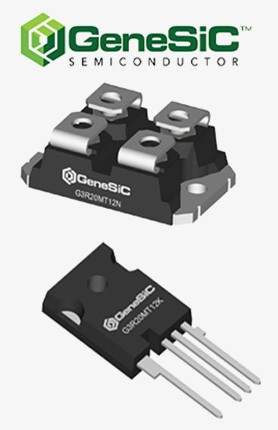



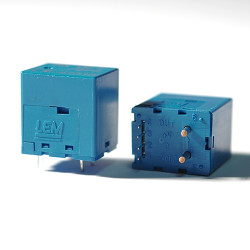
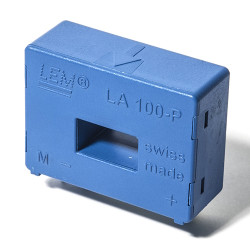
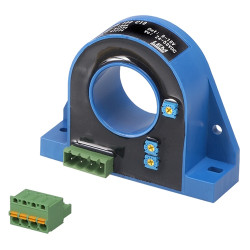
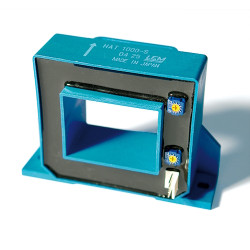

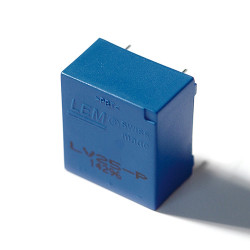
Leave a comment